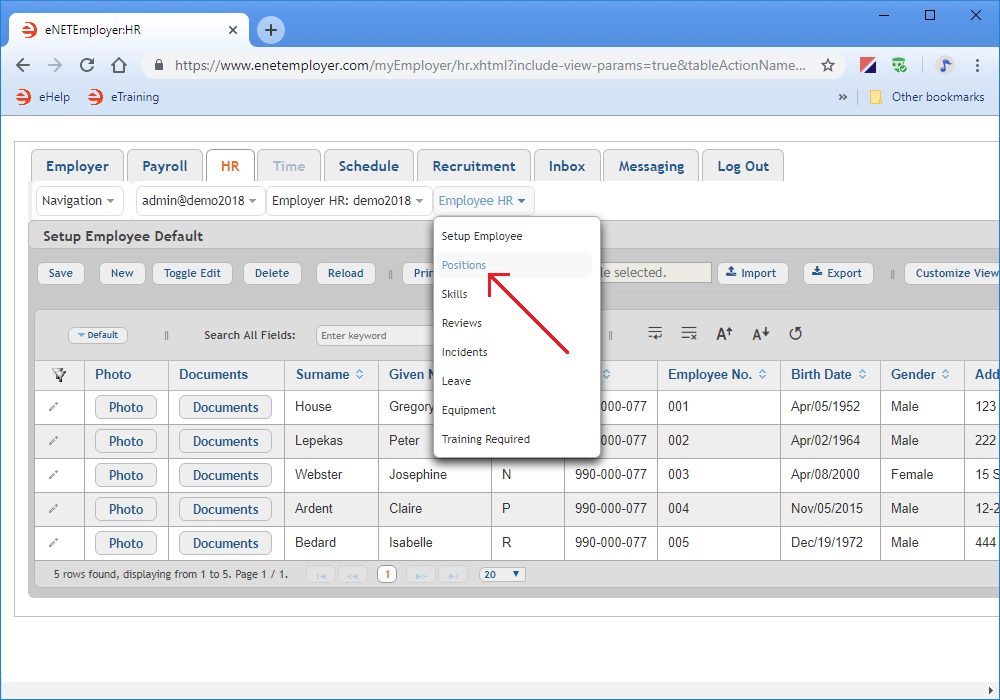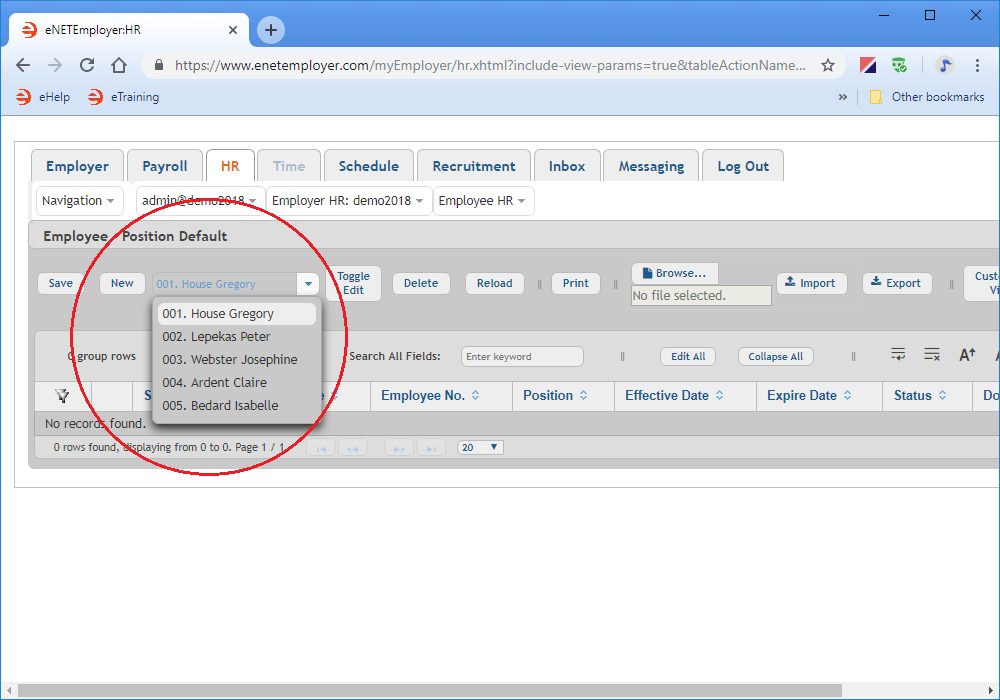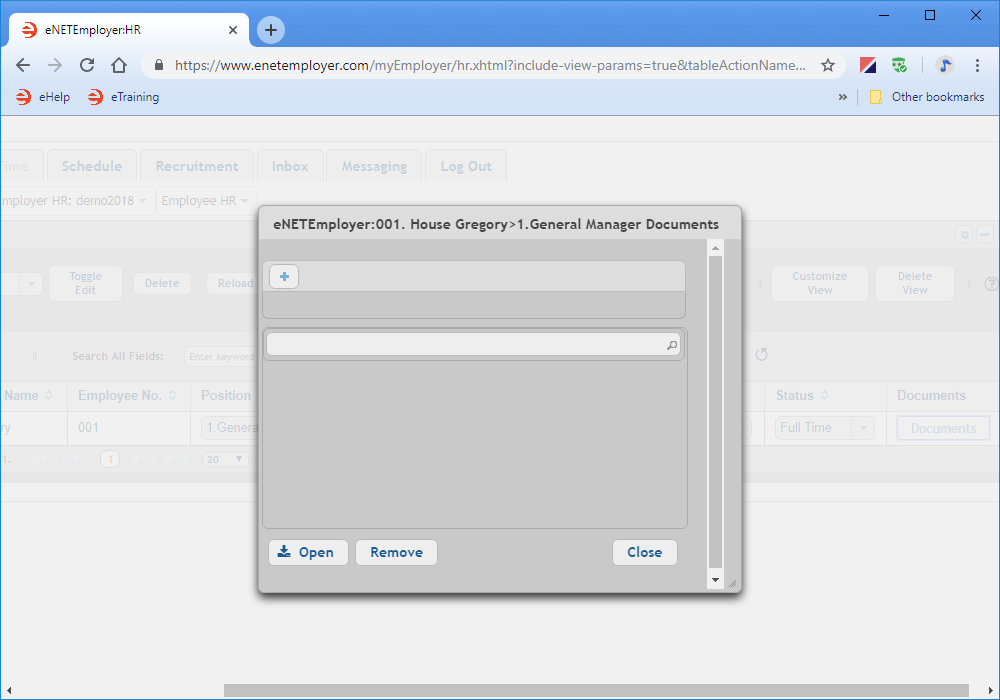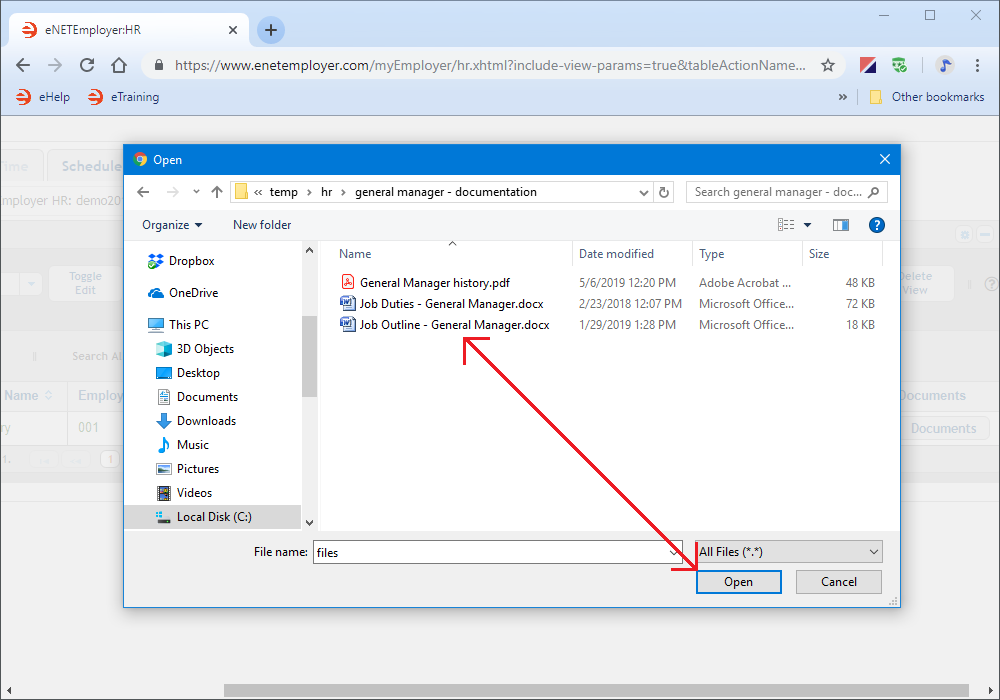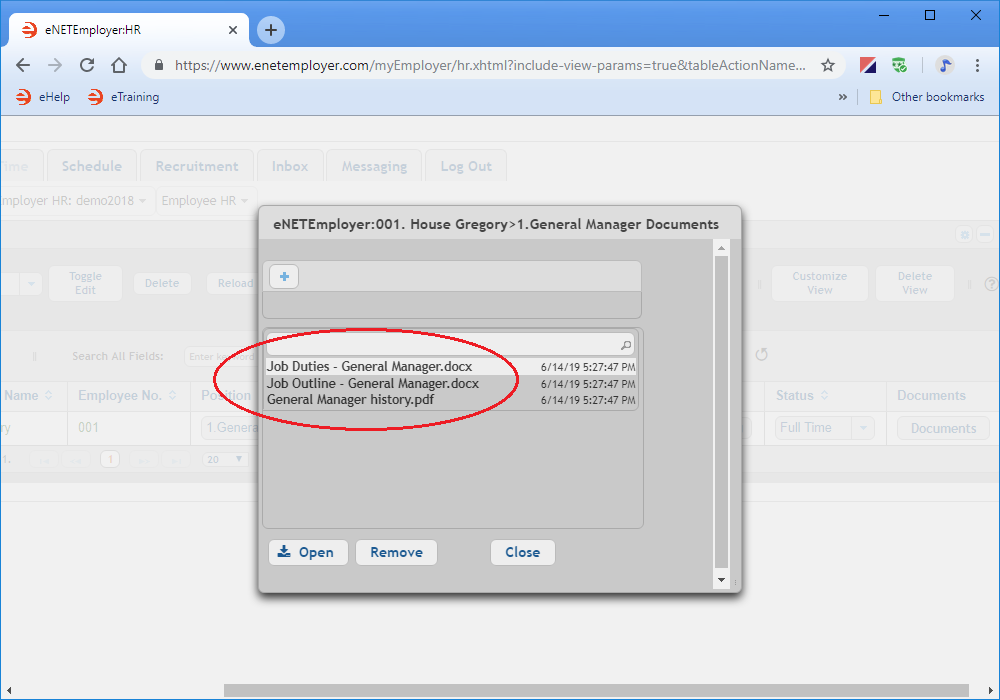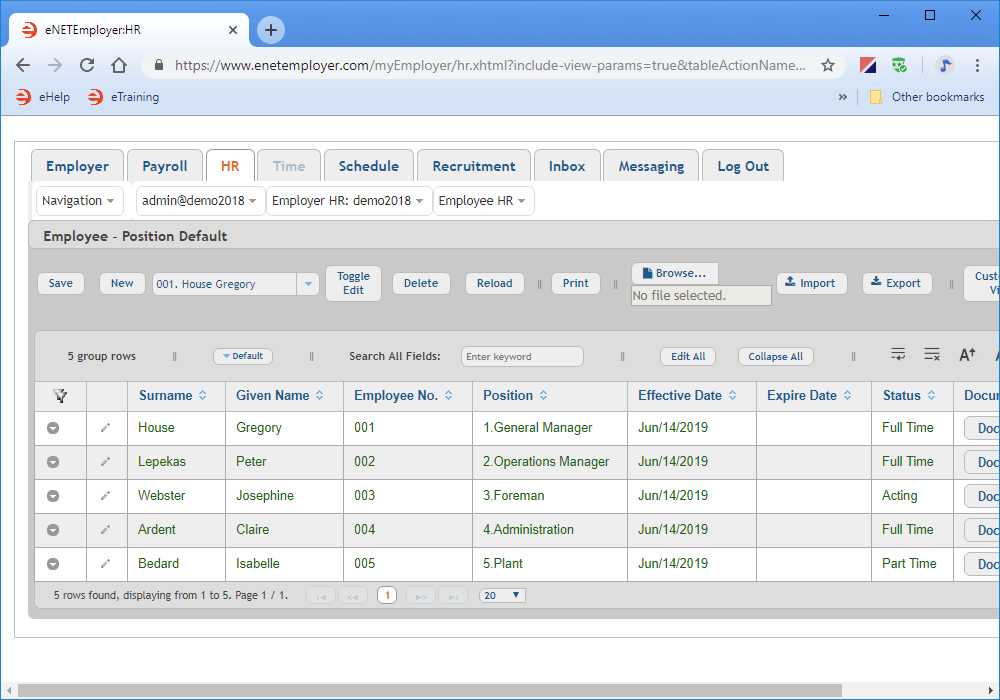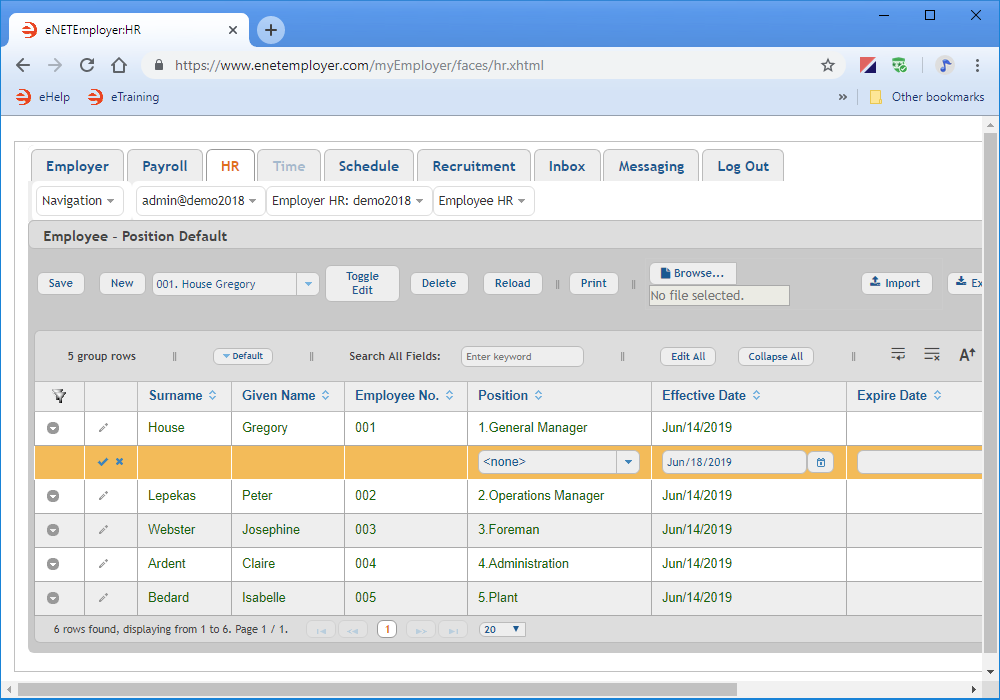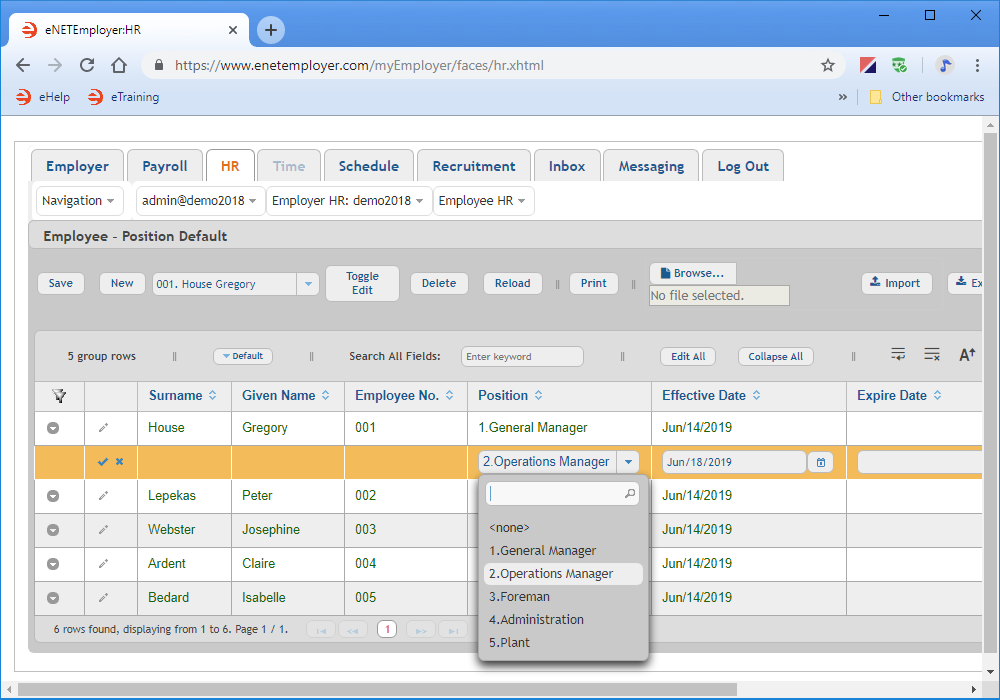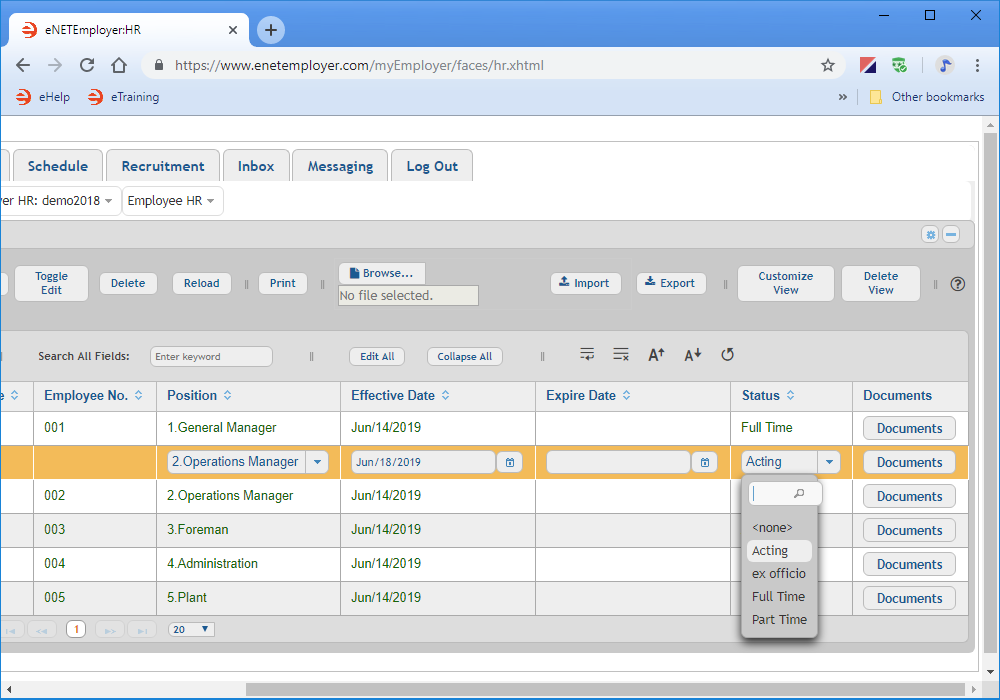Help Toolbar (select a button to browse other online help sections) Home Tutorials Resources Search Tabs & Menus Button Bar Table & Data Display |
Assigning an HR Position to an Employee
This tutorial will show you how to assign HR positions to your employees. Positions can help you to control employee processing based on the type of work each person performs.
This tutorial has two parts:
Before you begin: - This tutorial assumes that you have added one or more Positions to your Human Resource program via the HR module's Employer HR - Positions screen. If you have not yet added any employee positions, please view the Create an Employee Position tutorial to learn how to do so before proceeding with this tutorial. |
NOTE: Click on the images below to view them at full size
To Assign an HR Position to an Employee:
- Click on the HR tab and then choose the Employee HR menu to display the various options.
- Choose the Employee HR - Positions menu option. This opens the Employee - Position screen where you can assign job positions to your employees.
- When the Employee Position screen appears, select the drop-down list immediately to the right of the New button. This displays a list of the employees that are a part of your HR program.
- Select the desired employee's name, and then choose the New button to insert a new position row in the table.
- Move to the Position cell and then click on the downward arrow to display a list of employee positions that have been defined for your company.
- Click on the position type that you wish to assign. This closes the drop-down menu and displays your selection in the Position cell.
- Move to the Effective Date cell and use the Calendar icon to defined the date on which the employee assumed the position.
- Move to the Status cell and then click on the downward arrow to display a list of position statuses that have been defined for your company.
- Click on the desired status indicator for the current employee position. This closes the drop-down menu and displays your selection in Status cell.
- Select the Documents button to open a window where you can attach documents and files that pertain to the current job position. This can include PDFs, word processing documents, spreadsheets and images.
- When the Documents window appears, select the "+" (plus sign) icon to display the Open dialog box, and then use this window to navigate to the location of the document(s) that you wish to add.
Example: In our example below, we see several documents that relate to the "General Manager" job position. - Select one or more documents as needed, and then choose the Open button. This adds the selected document(s) to the eNETEmployer Documents window.
- Select the Close button to exit the Documents window.
- When your details are complete, choose the Save icon (the Check Mark icon at the left side of the row) to accept your changes. This action saves the changes for the row and takes you out of Edit Mode.
- Repeat the preceding steps to add new employee positions as needed.
Example: In Fig. 08 below, we have assigned a position to each of our five employees. Each position reports to a superior, with the General Manager being at the top of the hierarchy. - Save the changes to each row when you are complete.
No Available Positions? If you do not see any positions in this drop-down list, it is because none have yet been added in the HR module's Employer HR - Positions screen. Refer to the Create an Employee Position tutorial for further details. |
Example: In Fig. 03 below, we see five available positions, with each reporting to a hierarchy that begins with the General Manager position. These positions were added earlier in the Create an Employee Position tutorial.
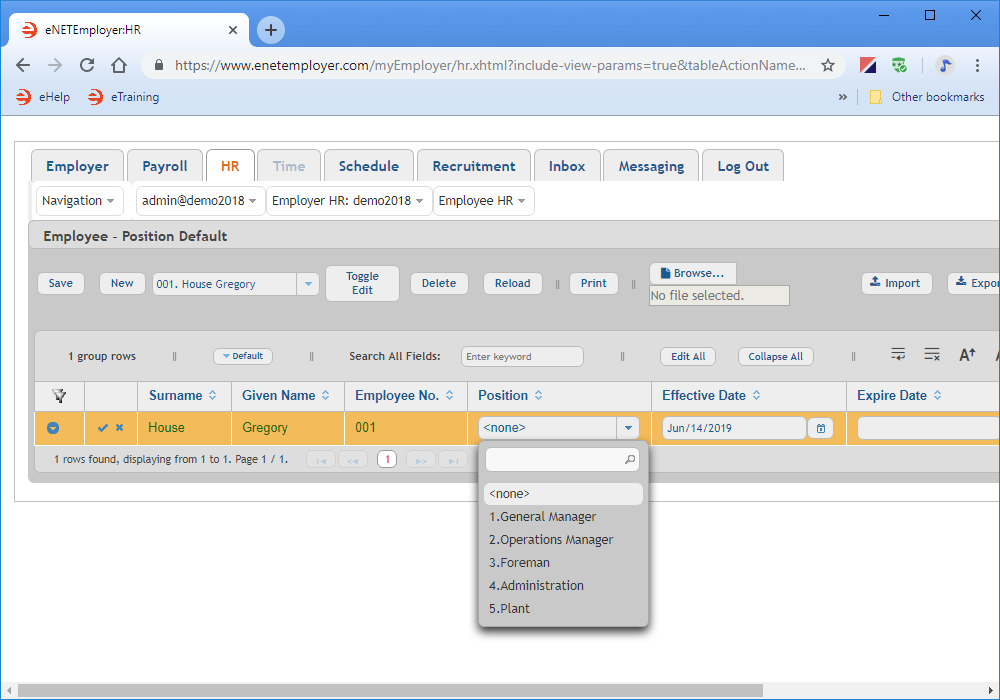
No Available Position Statuses? If you do not see any positions status indicators in this drop-down list, it is because none have yet been added in the Emloyer tab's HR - HR Define Position Status screen. Refer to the Creating an HR Position Status tutorial for further details. |
Example: In Fig. 04 below, we have see four available position statuses, including two of the most common types: Full Time and Part Time.
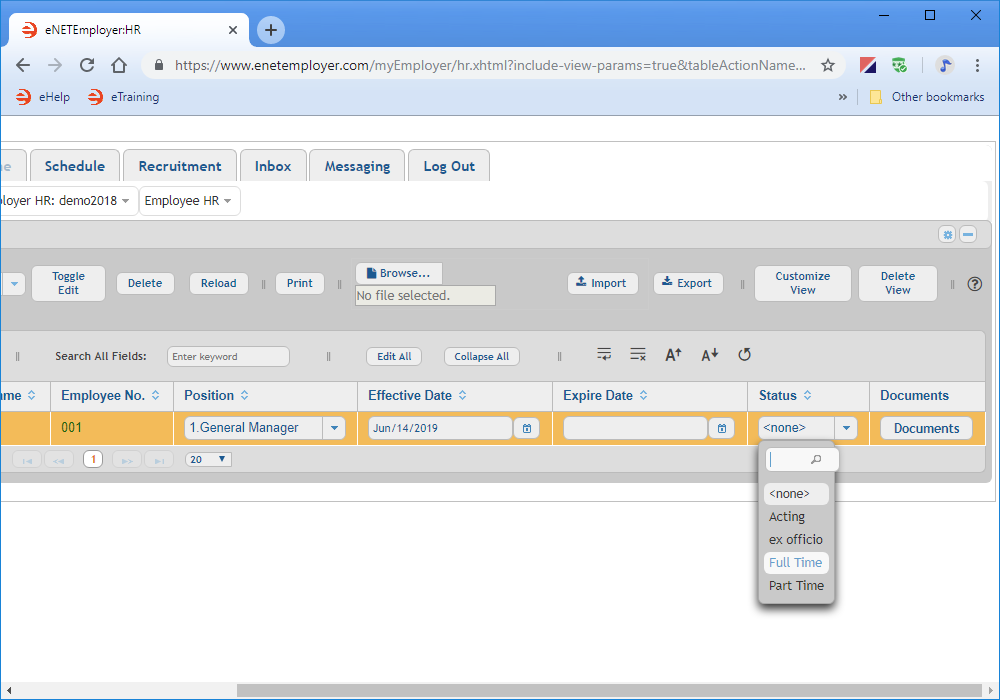
To Assign Multiple Positions to an Employee
If you have employees who work in multiple positions, you can assign more than one position easily.
- In the Employee - Position screen, select the drop-down list immediately to the right of the New button to display the list of employees.
- Select the name of the person to whom a second position will be assigned, and then choose the New button. This inserts a subrow under the selected employee's existing position row.
- Move to the Position cell for the new sub row, and then click on the downward arrow to display a list of available positions that can be assigned to the employee.
Example: In Fig. 10 below, we will select the Operations Manager position since our General Manager (Gregory) fills this role any time that the full time Operations Manager is away from the office. - Click on the additional position that you wish to assign. This closes the drop-down menu and displays your selection in the Position cell.
- Move to the Effective Date cell and use the Calendar icon to defined the date on which the employee became available to work in this additional position.
- Click on the downward arrow in the Status cell, and then choose the desired status indicator for the additional employee position.
Example: In Fig. 11 below, we will select the "Acting" status since our General Manager only fills this role when the full time Operations Manager is away from the office. - Save the changes to the row when you are complete.
This completes the tutorial on assigning HR positions.
See Also:
